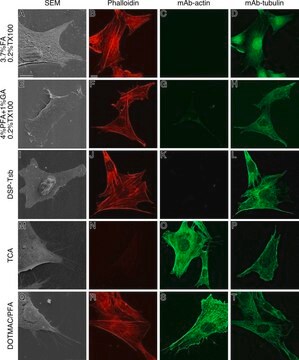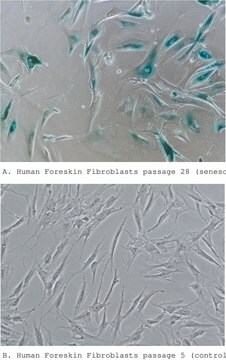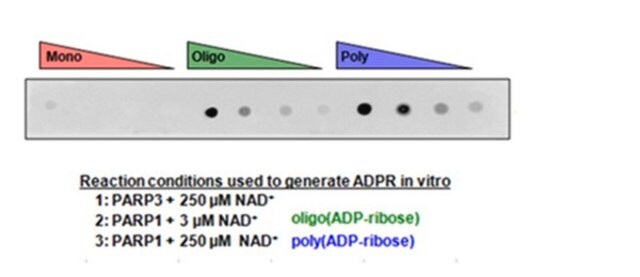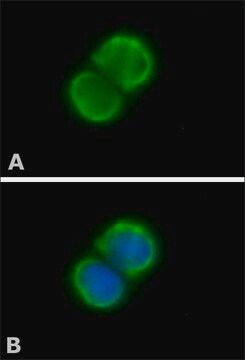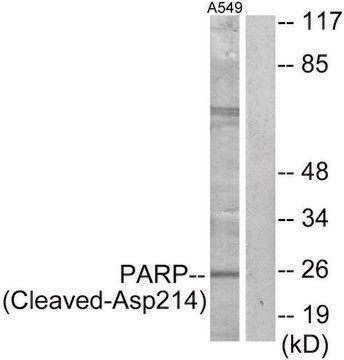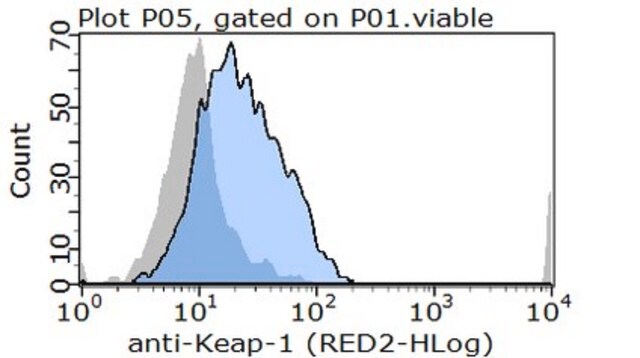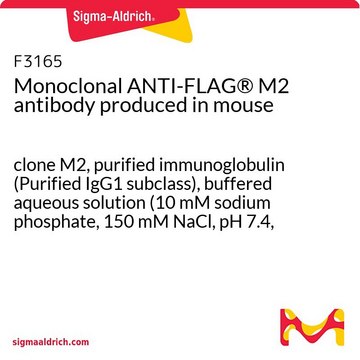P248
Monoclonal Anti-PARP antibody produced in mouse
clone C-2-10, ascites fluid
Synonim(y):
Monoclonal Anti-Poly[ADP-ribose] Polymerase
About This Item
Polecane produkty
pochodzenie biologiczne
mouse
Poziom jakości
białko sprzężone
unconjugated
forma przeciwciała
ascites fluid
rodzaj przeciwciała
primary antibodies
klon
C-2-10, monoclonal
masa cząsteczkowa
antigen 116 kDa (PARP)
antigen 85 kDa (prICE/caspase-3 cleavage product)
reaktywność gatunkowa
hamster, rat, mouse, primate
spodziewany brak reakcji z
avian
metody
ELISA: suitable (Assay Dependent)
immunocytochemistry: suitable (Assay Dependent)
immunofluorescence: suitable (Assay Dependent)
immunohistochemistry: 1:10-1:100
western blot: 1:500
izotyp
IgG1
numer dostępu UniProt
Warunki transportu
dry ice
temp. przechowywania
−20°C
docelowa modyfikacja potranslacyjna
unmodified
informacje o genach
mouse ... Parp1(11545) , Parp2(11546)
rat ... Parp1(25591) , Parp2(290027)
Powiązane kategorie
Opis ogólny
Poly (ADP-ribose) polymerase 1 (PARP1)/PARP is encoded by the gene mapped to human chromosome 1q42. It is a nuclear protein with molecular mass of 113kDa and is characterized with three functional domains. It belongs to the PARP superfamily.
Specyficzność
Immunogen
Zastosowanie
Działania biochem./fizjol.
Postać fizyczna
Oświadczenie o zrzeczeniu się odpowiedzialności
Nie możesz znaleźć właściwego produktu?
Wypróbuj nasz Narzędzie selektora produktów.
Kod klasy składowania
10 - Combustible liquids
Klasa zagrożenia wodnego (WGK)
nwg
Temperatura zapłonu (°F)
Not applicable
Temperatura zapłonu (°C)
Not applicable
Wybierz jedną z najnowszych wersji:
Masz już ten produkt?
Dokumenty związane z niedawno zakupionymi produktami zostały zamieszczone w Bibliotece dokumentów.
Nasz zespół naukowców ma doświadczenie we wszystkich obszarach badań, w tym w naukach przyrodniczych, materiałoznawstwie, syntezie chemicznej, chromatografii, analityce i wielu innych dziedzinach.
Skontaktuj się z zespołem ds. pomocy technicznej

